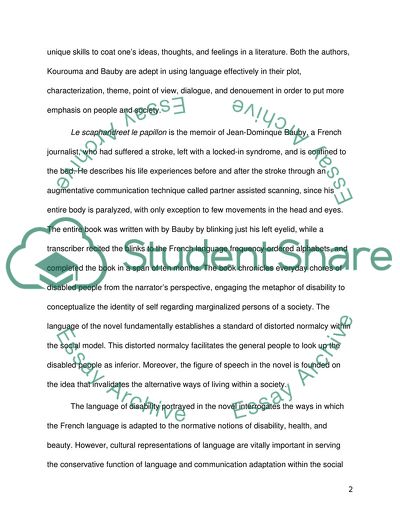Cite this document
(“Language and Identity in Literature Essay Example | Topics and Well Written Essays - 2000 words”, n.d.)
Language and Identity in Literature Essay Example | Topics and Well Written Essays - 2000 words. Retrieved from https://studentshare.org/literature/1690795-discuss-the-following-proposition-language-and-the-uses-to-which-it-is-put-are-central-to-a-peoples-definition-of-itself
Language and Identity in Literature Essay Example | Topics and Well Written Essays - 2000 words. Retrieved from https://studentshare.org/literature/1690795-discuss-the-following-proposition-language-and-the-uses-to-which-it-is-put-are-central-to-a-peoples-definition-of-itself
(Language and Identity in Literature Essay Example | Topics and Well Written Essays - 2000 Words)
Language and Identity in Literature Essay Example | Topics and Well Written Essays - 2000 Words. https://studentshare.org/literature/1690795-discuss-the-following-proposition-language-and-the-uses-to-which-it-is-put-are-central-to-a-peoples-definition-of-itself.
Language and Identity in Literature Essay Example | Topics and Well Written Essays - 2000 Words. https://studentshare.org/literature/1690795-discuss-the-following-proposition-language-and-the-uses-to-which-it-is-put-are-central-to-a-peoples-definition-of-itself.
“Language and Identity in Literature Essay Example | Topics and Well Written Essays - 2000 Words”, n.d. https://studentshare.org/literature/1690795-discuss-the-following-proposition-language-and-the-uses-to-which-it-is-put-are-central-to-a-peoples-definition-of-itself.


